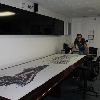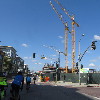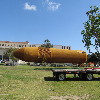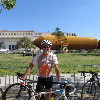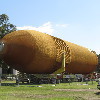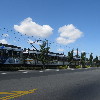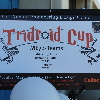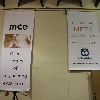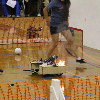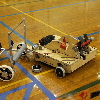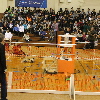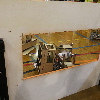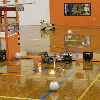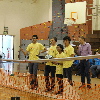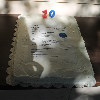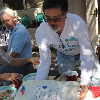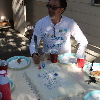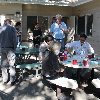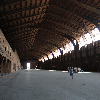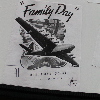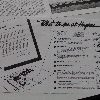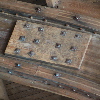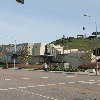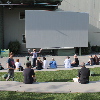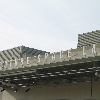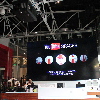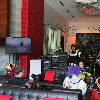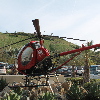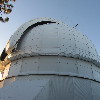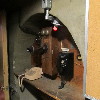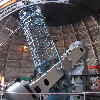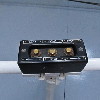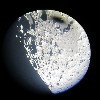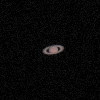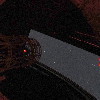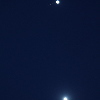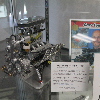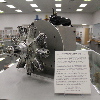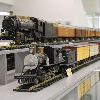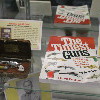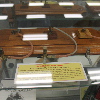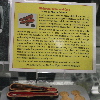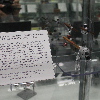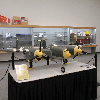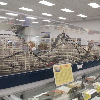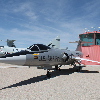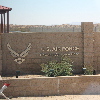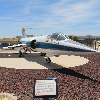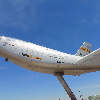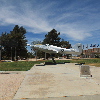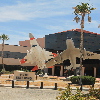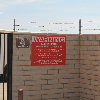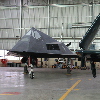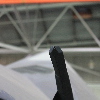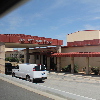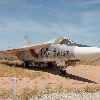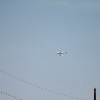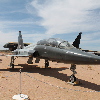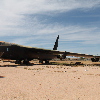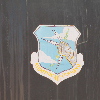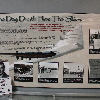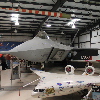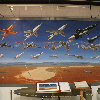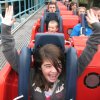Earthquake Tour with Atlas Obscura
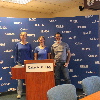 |
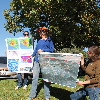 |
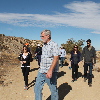 |
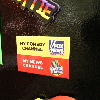 |
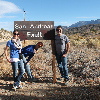 |
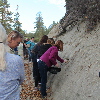 |
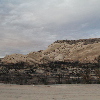 |
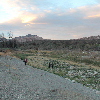 |
Last year, I helped put on the San Andreas Scavenger Hunt with Atlas Obscura. It was pretty popular, and people have been asking when we’d do it again, so today was the day.
We met up at the Seismo Lab at Caltech for a quick tour. I brought everyone in to the first floor exhibit, where our geologist guide Kate explained the peel from Pallet Creek and told a bit of the history of trenching studies and how they tell us about the history of earthquakes at a site. Kate was a good guide for this, since she does trenches as part of her research at the USGS.
Next, we went upstairs to the Media Room, largely so everyone could see the room where the TV people go after an earthquake. Jen is the new staff seismologist at Caltech, and she spoke for a bit about how the displays work and how they are used after an earthquake.
Then we all got on the bus for our first stop at the McDonald’s in San Fernando. This is the small fault scarp from the 1971 earthquake that they just sort of smoothed over and planted grass on. Kate brought along a poster that showed a map of surface ruptures from the 1971 earthquake.
Our next stop was the overlook off the 14 freeway in Palmdale. That was a long ride from San Fernando. But it also meant we got to pass by Vasquez Rocks. I made sure to point out the famous spot where Captain Kirk faced off with the Gorn in the original series episode, “Arena”. When we got to the overlook, Kate explained what we were looking at and how we could see the trace of the fault stretching off into the distance. Then we got back on the bus for the short ride to Avenue S, where we walked up the hill to look at the famous road cut where the 14 freeway goes through a small hill that was pushed up by motion on the San Andreas.
Our lunch stop was at Charlie Brown Farms, which is a weird little place in Littlerock. And after that, we went to our photo-op stop at the signs marking the fault line on Pallet Creek Road. We took a group photo, and make sure to point out that from that side, we could see the trace of the fault going off into the distance in both directions.
Then we went just a short distance down the road to the Pallet Creek site. This was where Kerry Sieh did his original trenching studies back in the ’70s and established a timeline of past earthquakes going back several hundred years. Kate does trench studies, so she was able to point out lots of details in the face where the fault trace was exposed.
The next stop was a road cut near Big Pine. One side of the cut is a hill of sandy fault gouge. I showed everyone how you can dig out seemingly-solid chunks of rock from the sand and crush them in your hands. That’s always a hit.
After a short stop in Wrightwood, we headed down the other side of the mountains. Then we turned off to go to the last stop of the tour at Lost Lake. As we got to the railroad crossing, there was a train slowly making its way up the mountain. And then it stopped. We sat there for a few minutes, and then a very long train came by, going down the mountain. We figured that the stopped train might be waiting for the downhill train to pass, so we waited it out. When the downhill train finished passing, the stopped train still sat there. And then another downhill train came by. We waited again until it had passed. Then the uphill train started moving again and finally cleared the crossing. And we finally made it to Lost Lake. Sadly, the drought has taken its toll, and the lake was no more. The bottom was soft mud, which shows that there is still a bit of water there, but not much. Also, there had been a fire there recently, and the parking lot gate was closed. This presented a problem for turning the bus around. We ended up having to back up about 1/4 mile to a turnout to get the bus turned around.
By the time we got moving again for the trip home, it was dark. And the traffic on the 210 freeway was very heavy. So we ended up getting back to Caltech about 1 1/2 hours later than planned. But it still seemed like everyone liked the tour.
